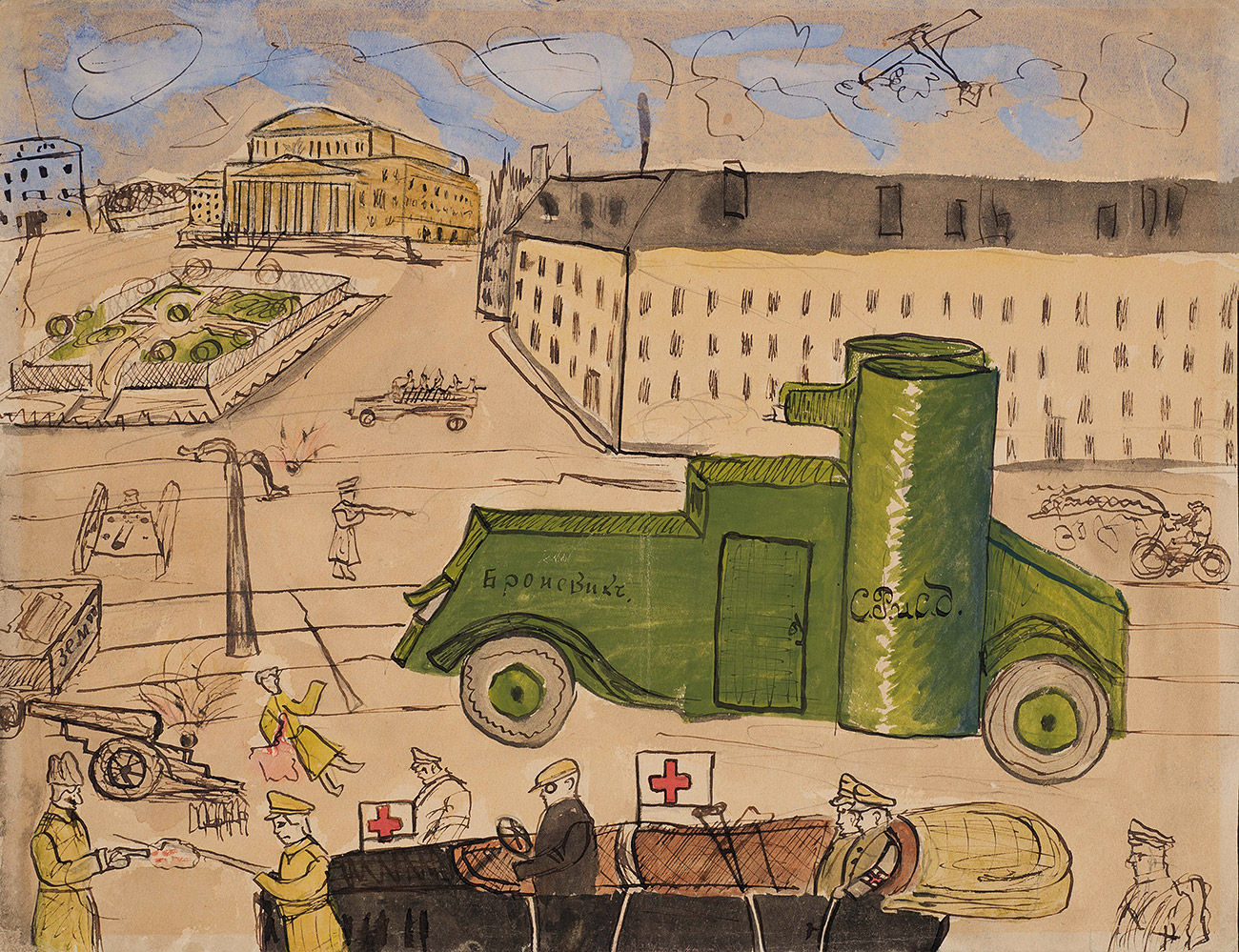
This collection of than 150 drawings was given to the Moscow Historical Museum in 1919 by the scholar Vasily Voronov. // “Battle of Teatralny Square”, Moscow, October-November 1917
Unknown author/State Historical Museum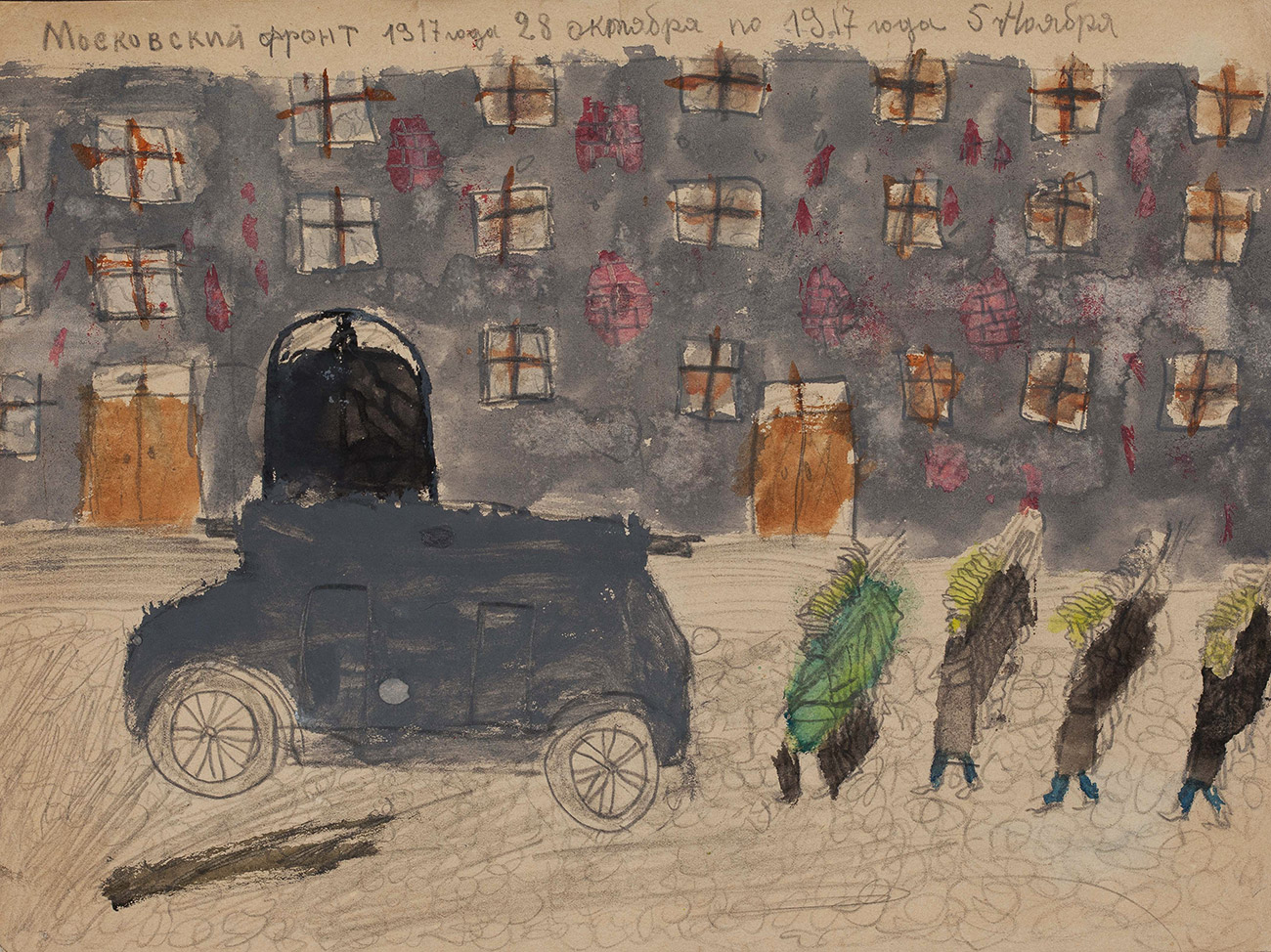
“Battle for Teatralny Square”, “Siege of a house” and “Shelling of the Kremlin” are just some of the titles from a series of drawings by children who witnessed of the revolutionary and post-revolutionary events of February-November 1917 in Moscow. // “The Moscow Front: Oct. 28-Nov. 5, 1917”, November 1917
Unknown author/State Historical Museum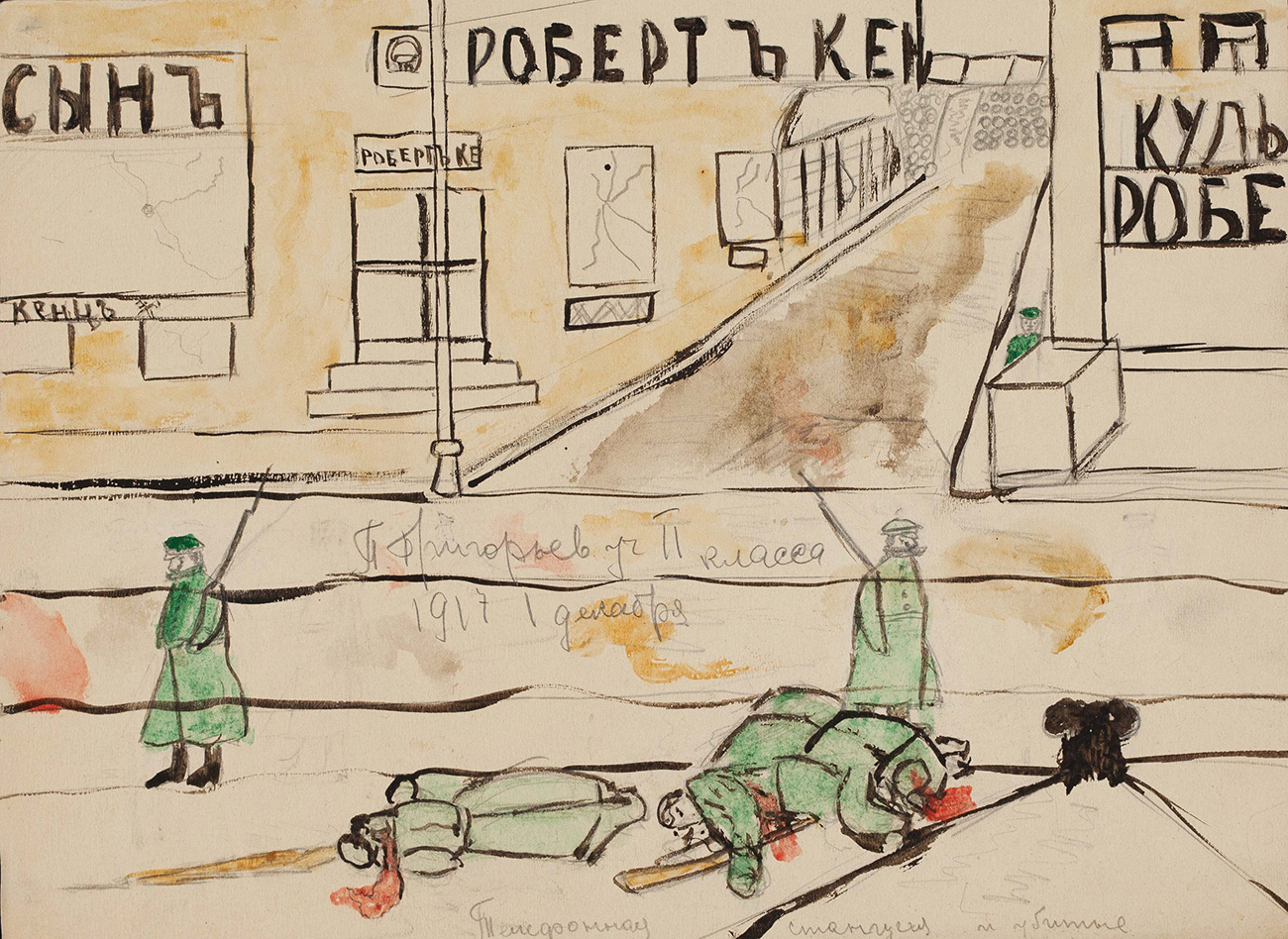
Today, to mark the centenary of the revolution, the museum has created an exhibition of this artwork entitled “The Great Russian Revolution Drawn by Children”, which runs till June 19. // “Telephone station and people killed”, Moscow, December 1917
P. Grigoriev/State Historical Museum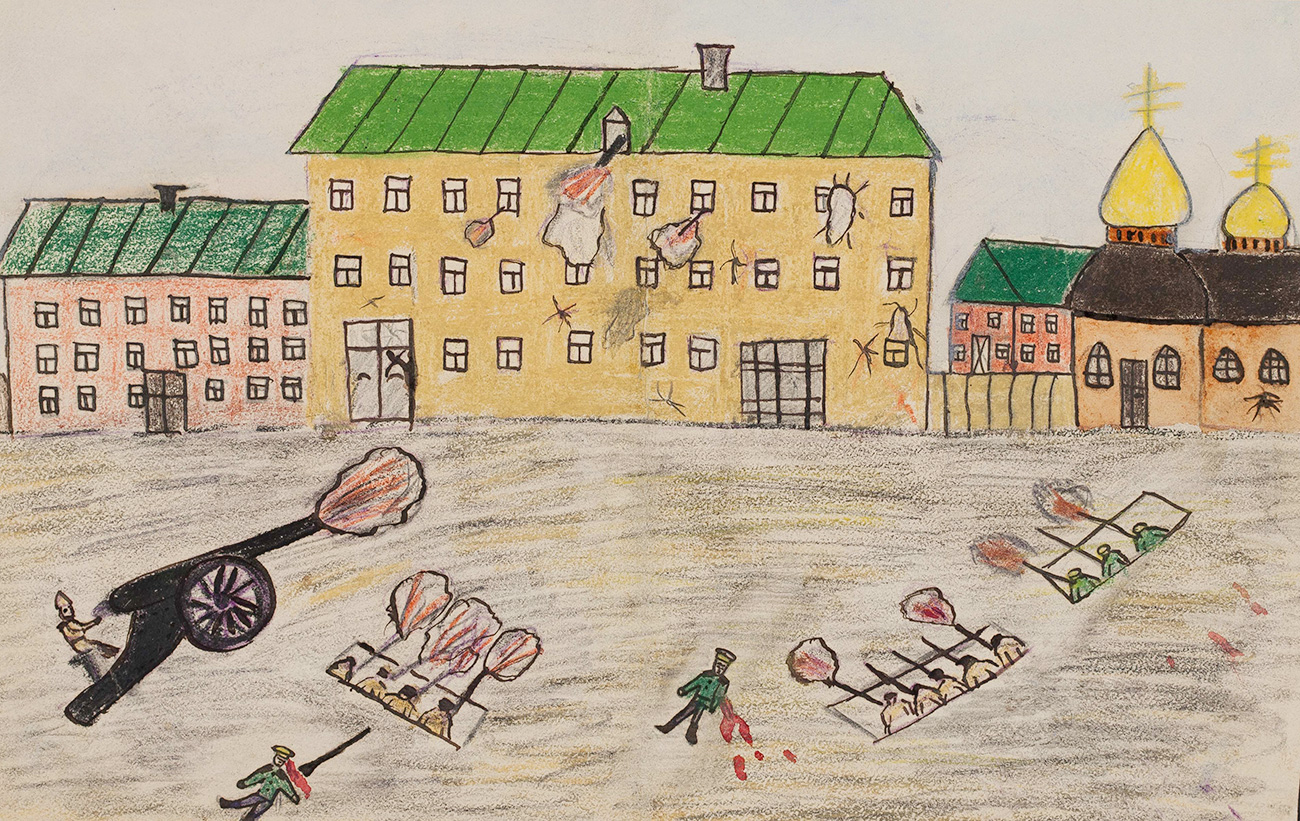
“Back then, boys and girls studied separately, so Voronov’s archive consists exclusively of drawings by boys from two Moscow institutions: the Lomonosov Grammar School and the Alexandrov Academy,” the exhibition curator Yevgeny Lukyanov told RBTH. // “Siege of a house”, Moscow, October-November 1917
Unknown author/State Historical Museum
Most of the names of the young artists, all of whom were aged 8-14, are sadly unknown. // “Shooting of cadets by the Bolsheviks”, Moscow, October-November 1917
Dusman/State Historical Museum
All of them were given the task of drawing what they had seen on the streets and squares of Moscow on their way to school. // “Shooting at the Red Guard”, Moscow, October-November 1917
Dusman/State Historical Museum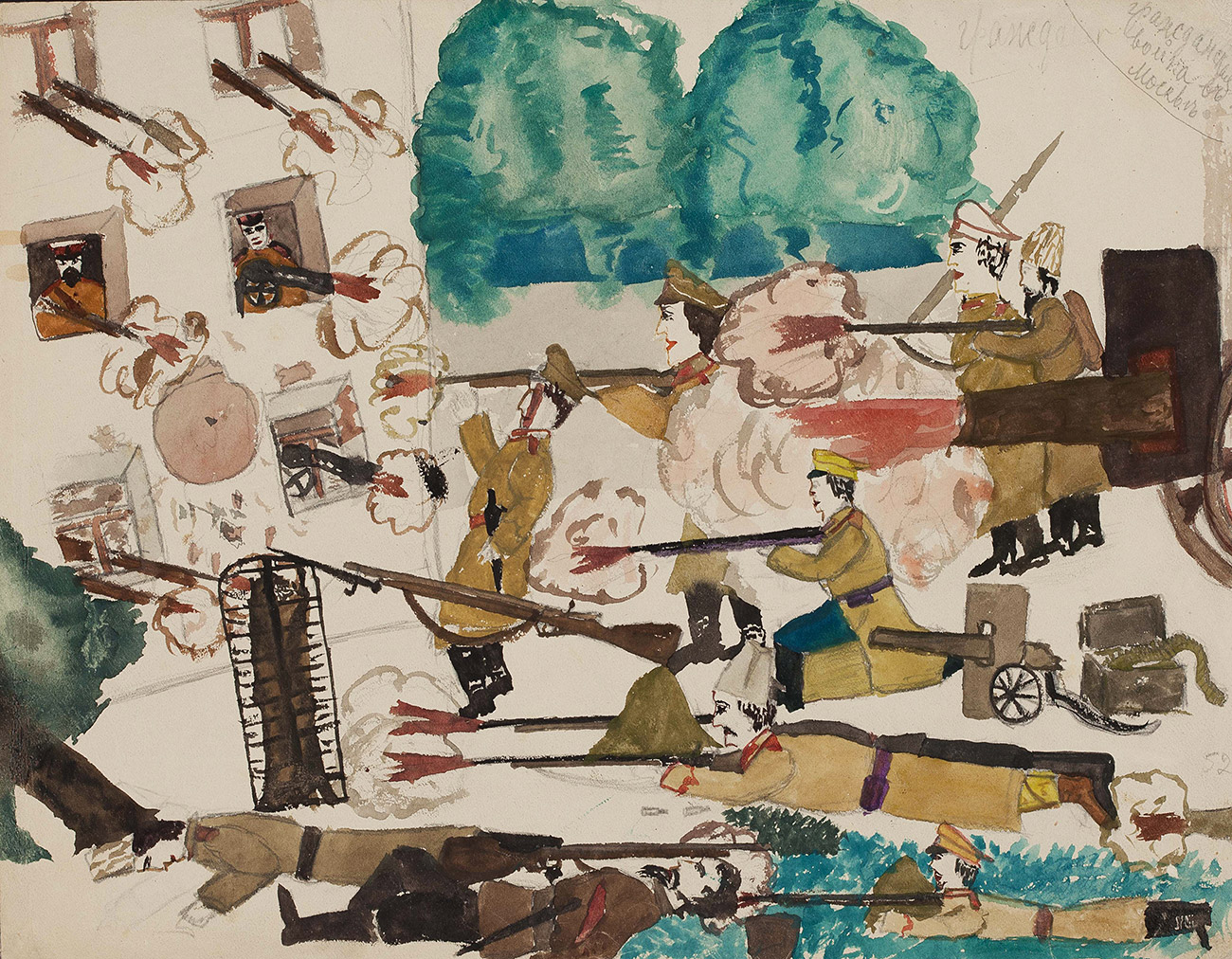
“The selection of drawings offers an accurate and interesting perspective, both historically and an artistically. // “Civil war in Moscow”, October-November 1917
Unknown author/State Historical Museum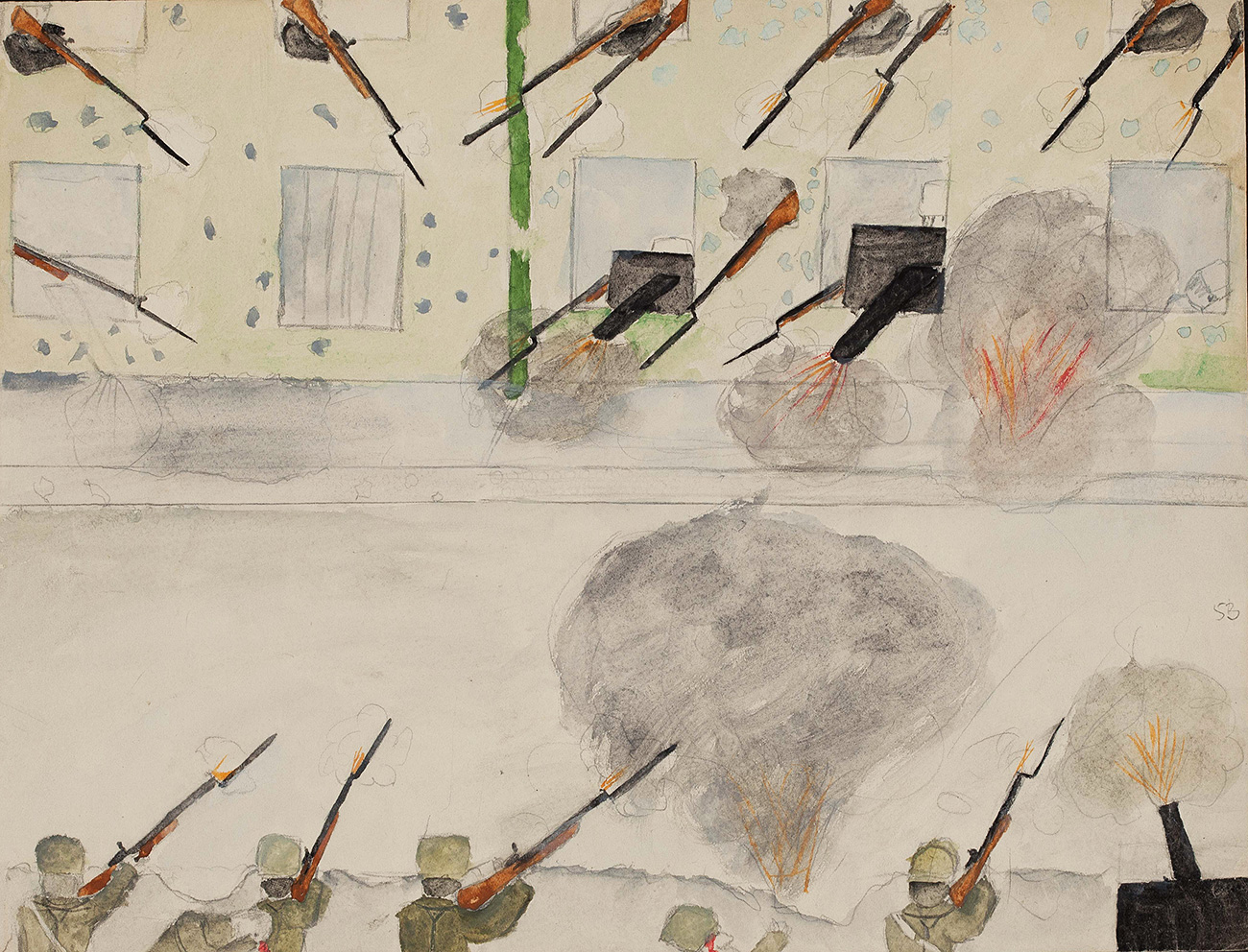
The collection depicts the events of that time in all their color and diversity,” says Lukyanov. // “Crossfire in the street”, Moscow, October-November 1917
Unknown author/State Historical Museum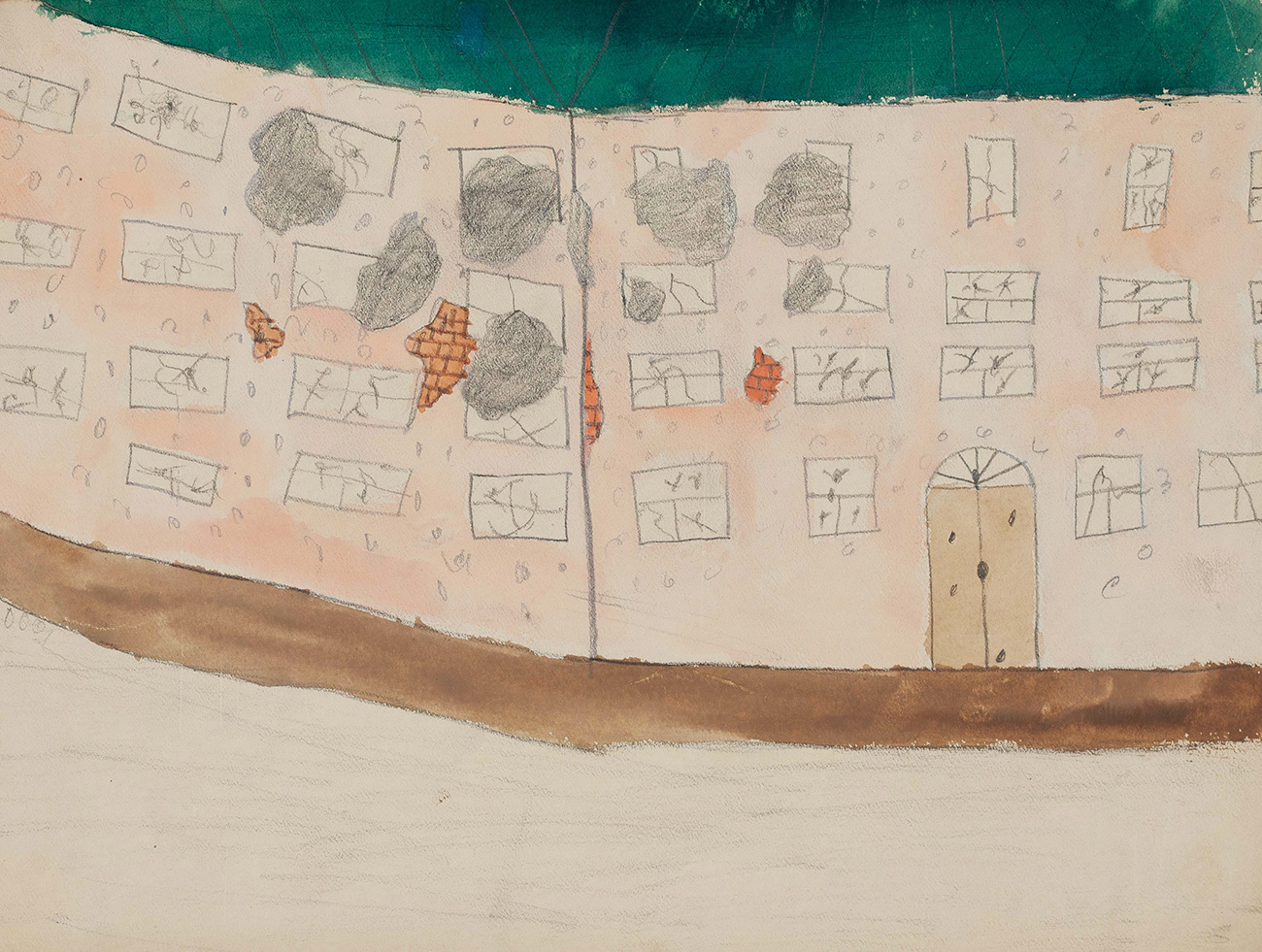
“Viewers will be interested to observe how the children’s attitudes changed over the period from February to October. // “House with traces of gunfire”, Moscow, October-November 1917
Unknown author/State Historical Museum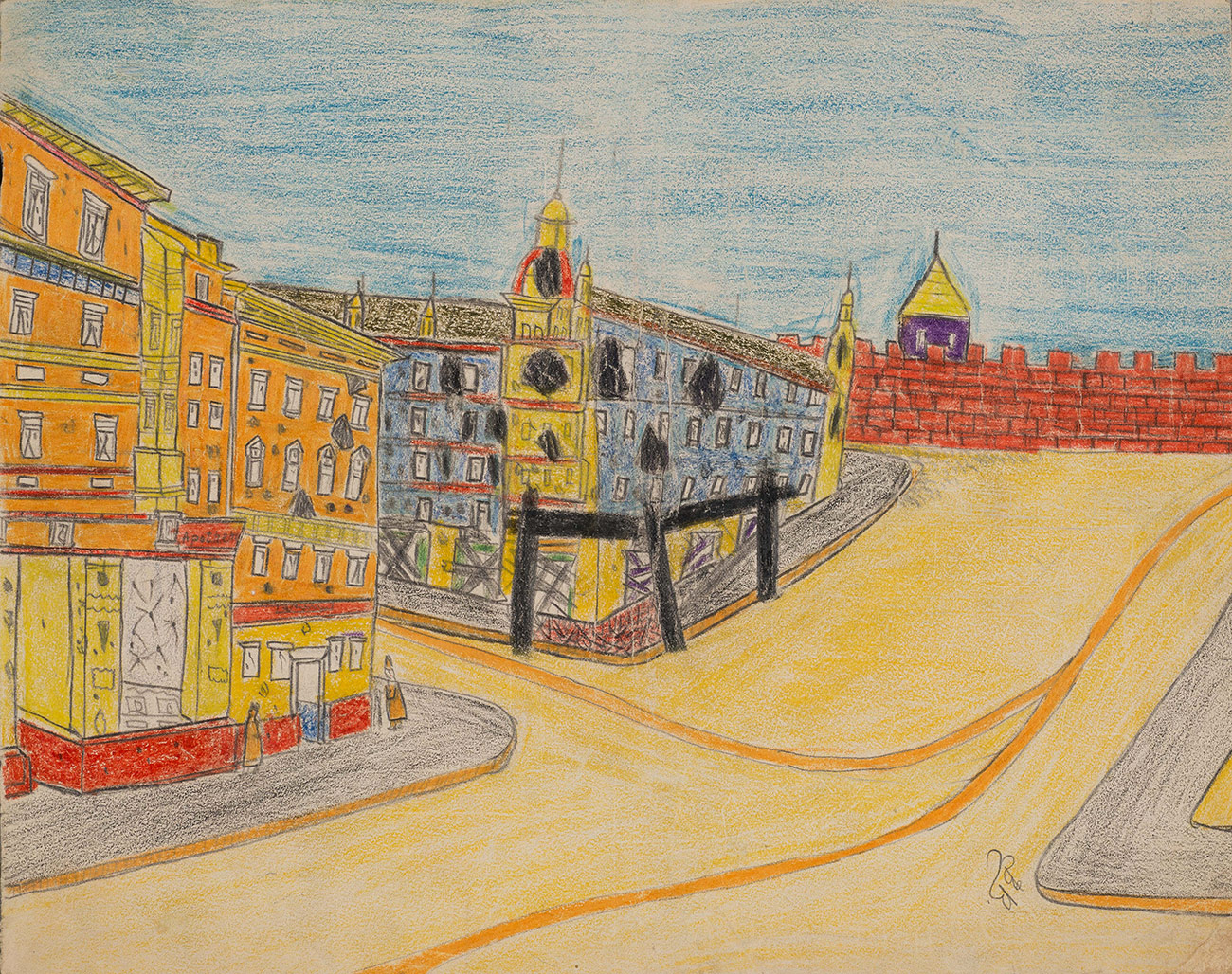
From the joyful acceptance of the February revolution to the total rejection of the October events—because the first revolution was perceived as liberation from the monarchy, while the Bolsheviks’ armed coup in October was horrifying. // “Shelled houses near the Kremlin”, Moscow, October-November 1917
Unknown author/State Historical Museum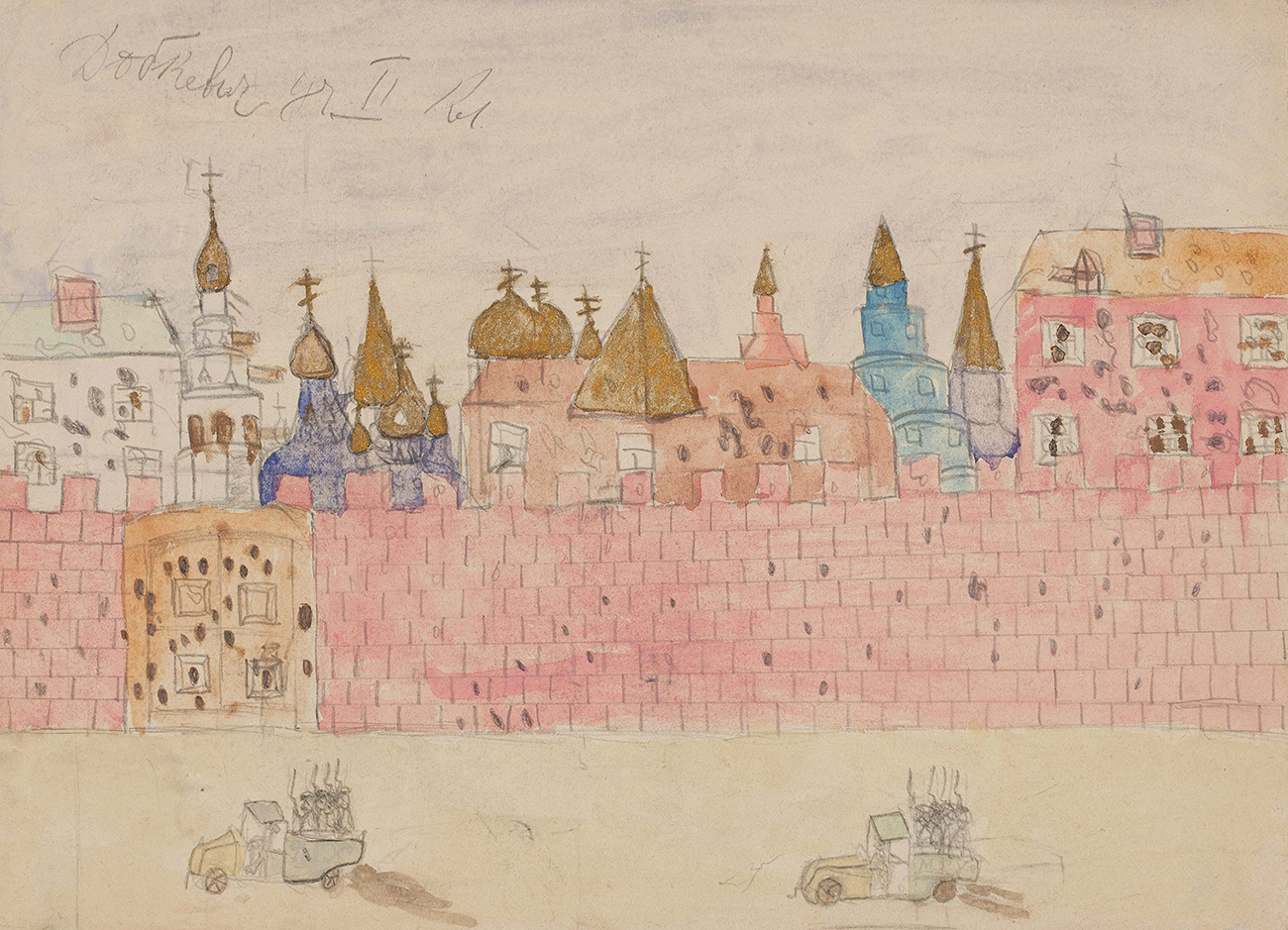
The children themselves saw people being killed in the streets and shots being fired”. // “Shelling of the Kremlin”, Moscow, October-November 1917
Dobkevich/State Historical Museum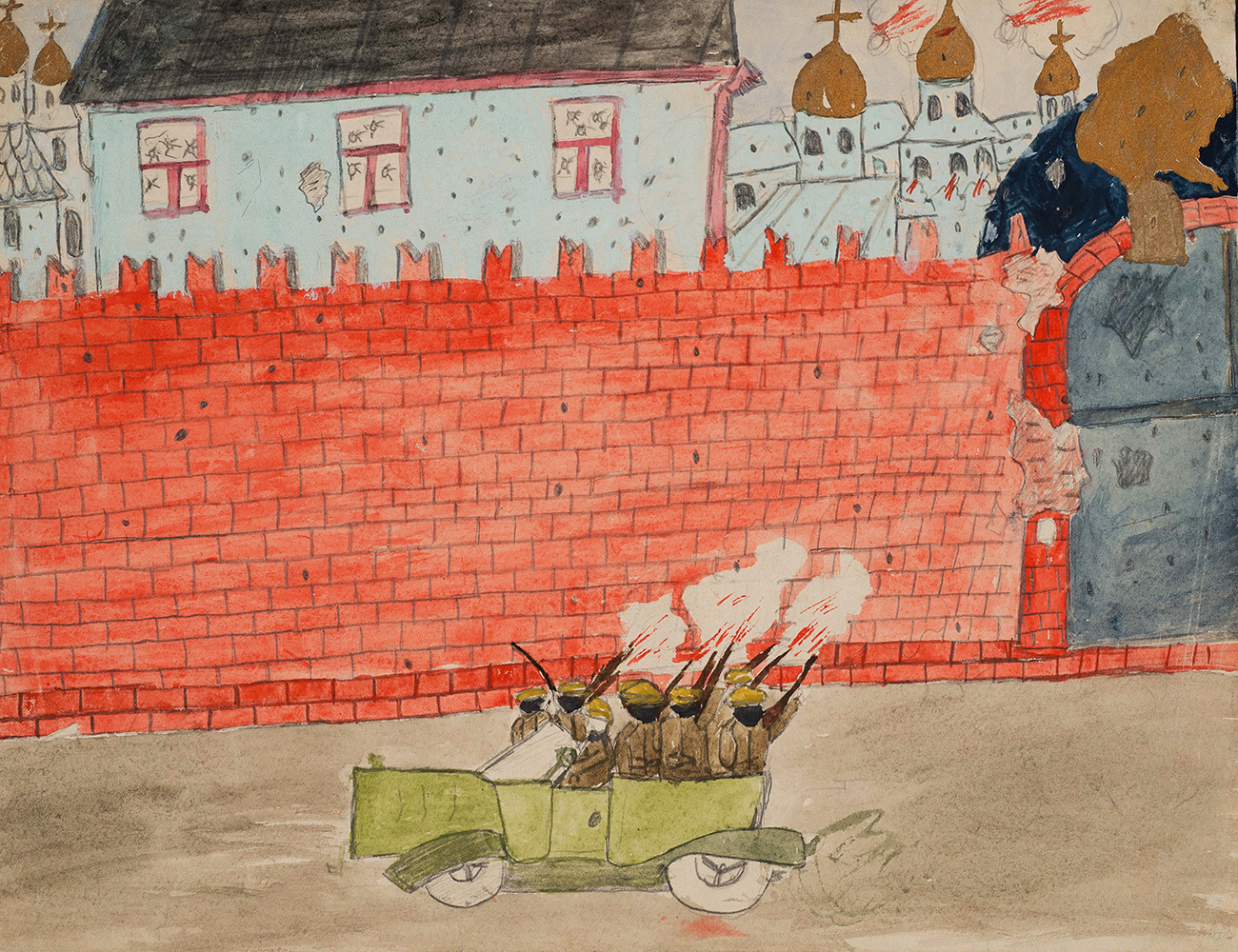
“Shelling of the Kremlin”, Moscow, October-November 1917
Unknown author/State Historical Museum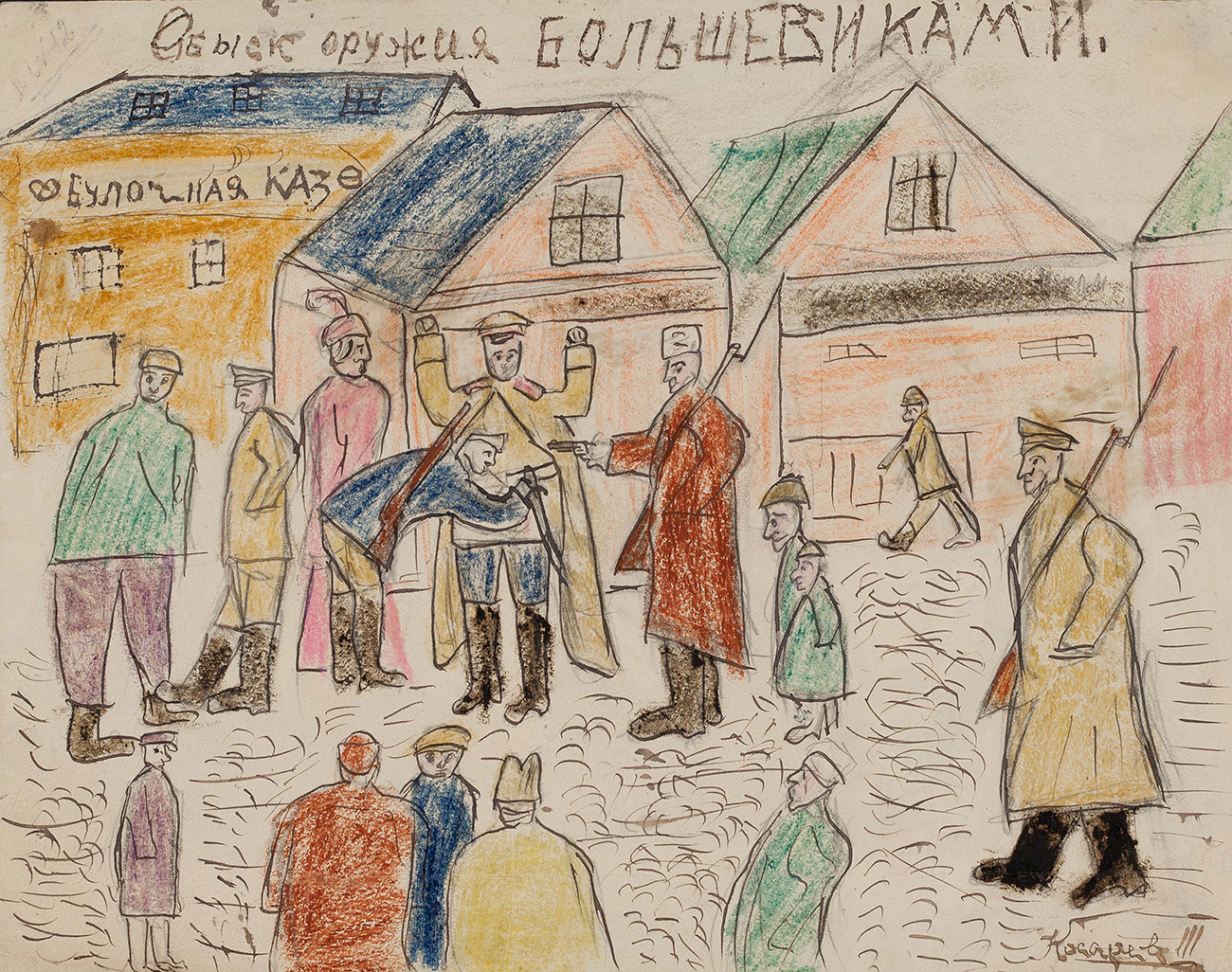
“Bolsheviks search for weapons”, Moscow, November 1917
Kosarev/State Historical Museum
“Bolshevik Cemetery”, Moscow, November 1917
Goncharov/State Historical Museum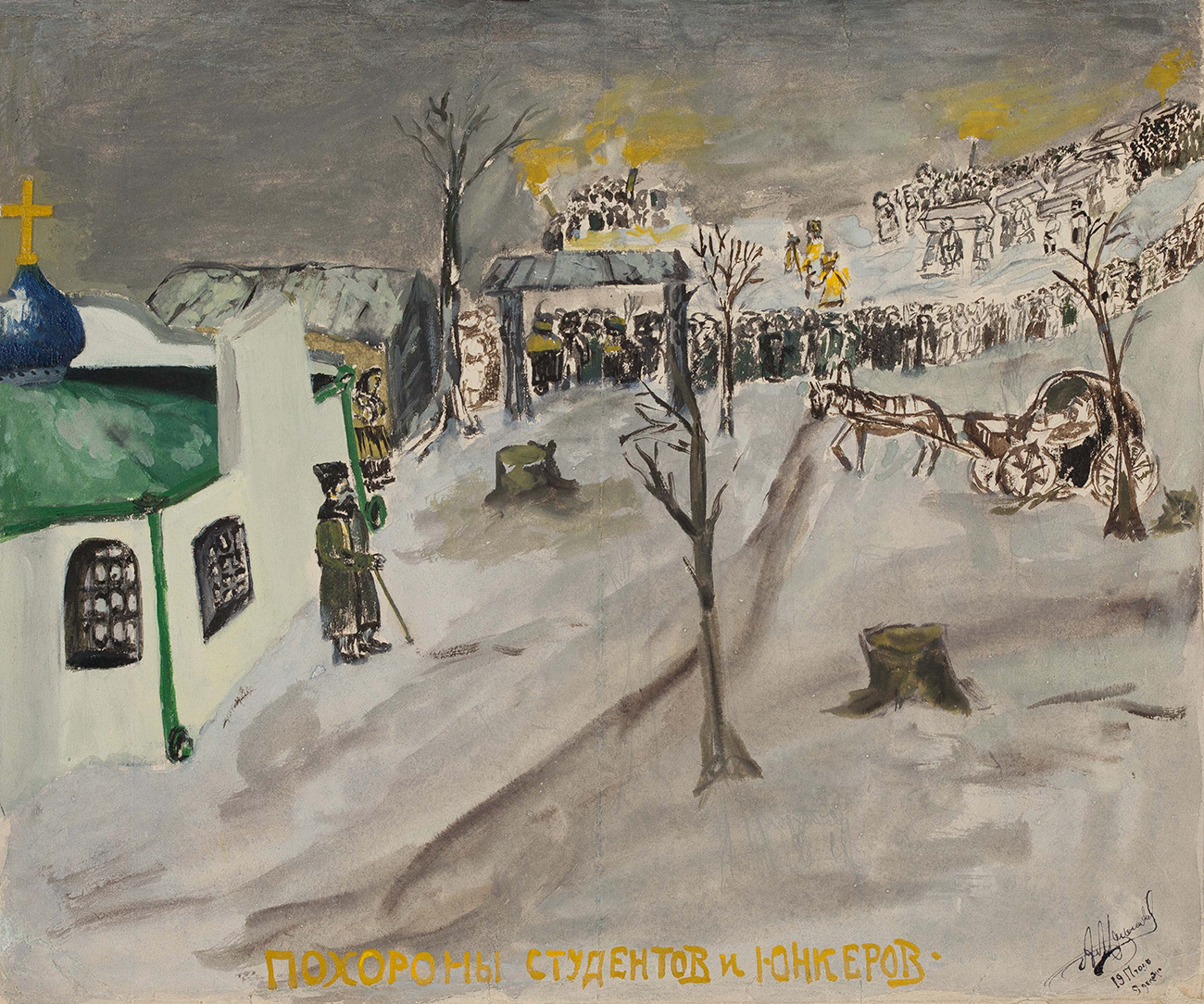
“Funeral of students and cadets”, Moscow, November 1917
A. Malyshkov/State Historical MuseumSubscribe
to our newsletter!
Get the week's best stories straight to your inbox